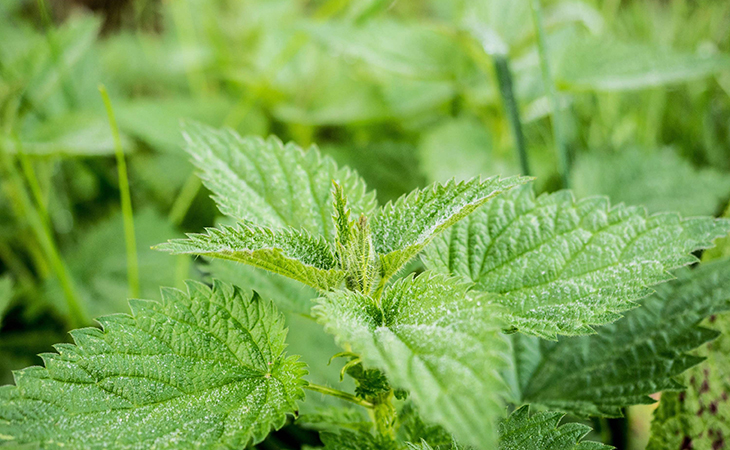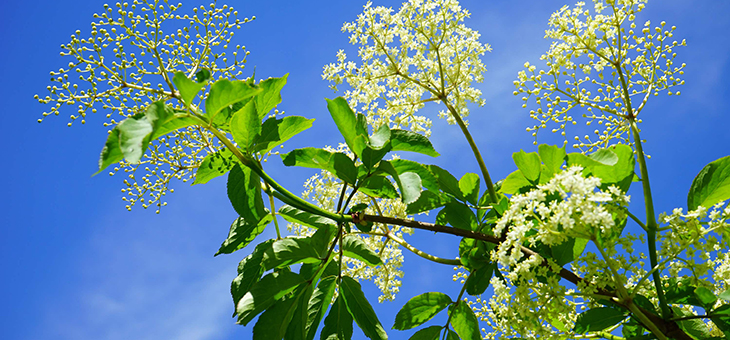Weeds are defined as wild, unwanted and unvalued – but while there’s no disputing their wildness, many people would definitely want them if they understood their true value.
Many of the rapidly growing green ‘pests’ actually boast a wealth of health benefits if consumed, because they contain useful bioactive compounds such as polyphenols, vitamins, minerals, proteins and fibre.
“Today’s weeds were our ancestors’ medicine cabinet,” explains dietitian Dr Carrie Ruxton. “From teas to soups and garnishes, they have a role in our diets – but take care to identify edible weeds properly, as some plants contain powerful toxins that can cause illness, and even kill.”
Here, Ms Ruxton and pharmacist Roy Lamb, highlight seven weeds that could be added to your superfood cupboard instead of your compost bin.
Nettle

This stinging scourge of bare flesh has been used over the centuries to make cloth, fishing nets, and even World War I German army uniforms when there was a shortage of cotton, says Mr Lamb.
Benefits
Nettles contain essential amino acid levels comparable to chicken, and similar amounts of omega-3 to those found in spinach, says Mr Lamb. Per serving, nettles can provide up to 100 per cent of the recommended daily intake of vitamin A, 50 per cent of calcium, 20 per cent of fibre and 12 per cent of iron, he explains.
Ms Ruxton says: “A study of postmenopausal women found a preparation made from nettles reduced hot flashes and increased quality of life. Always pick them in the spring when they’re most nutritious and discard the woody parts.”
How to use it
There are several ways to prepare nettles for consumption, advises Mr Lamb. To render the sting harmless, drop them in a pot of boiling salted water for a few minutes, or they can be dried using a dehydrator, or soaked in water for a few days. After this, they can be converted into nettle pesto or soup, or as an infusion in tea.
Read: The science behind herbal tea
Chamomile
In many areas, chamomile is considered a noxious weed to be eliminated, says Mr Lamb, who also points out that it’s one of the most popular ingredients in herbal teas.
Benefits
This common flower has long been championed as a way to ensure a good night’s sleep, but its fan base is larger than just old wives.
Scientific evidence suggests chamomile has a range of health benefits, as its flowers contain chemicals shown to be moderate antioxidants and antimicrobials. Additionally, studies indicate potent anti-inflammatory action and some cholesterol-lowering activities, he points out.
Ms Ruxton adds: “Just one daily serving of chamomile tea improves sleep quality and control of blood sugar levels, according to a scientific review. Steeping the teabag for 15 minutes ensures optimal levels of the bioactive properties, including polyphenols and prebiotics.”
How to use it
Chamomile flowers can be washed, dried and used on their own, or as a blend, in herbal teas. For desserts, such as panna cotta, chamomile also makes an attractive and healthy garnish, although Mr Lamb warns that it can cause allergic reactions, so take care, especially if you’re allergic to flowers like daisies.
Elderflower
As well as forming part of an edible garden, clumps of distinctive tall white elderflowers can also be used as a feature plant in the garden.
Read: Plants with benefits for your physical and mental health
Benefits
Studies suggest elder is a rich source of bioactive compounds, such as polyphenols, which can be antipyretic (fever-reducing), diuretic, antibacterial and anti-inflammatory, says Mr Lamb.
How to use it
Elderflower cordial dates back to Roman times, and many people make their own elderflower ‘champagne’. Mr Lamb points out that dried elderflowers contain a lot less goodness than fresh.
Common purslane
Hardy, with an ability to spread rapidly, common purslane is often found in gardens and public spaces.
Benefits
Mr Lamb says this weed’s succulent leaves are an excellent source of nutrients and antioxidants. It’s rich in potassium, magnesium and calcium, and it contains four different types of omega-3 fatty acid, which is useful for controlling cholesterol. Common purslane has some of the highest amounts of alpha-linolenic acid (ALA) and gamma-linolenic acid (LNA) of any green leafy vegetable, he says.
How to use it
Once washed, the leaves of purslane can be eaten raw in a salad, or blended with basil and pine nuts into a healthy pesto.
Sheep’s sorrel

This perennial small flowering plant is most common in the temperate regions of Australia but is also present in sub-tropical areas.
Benefits
As a good source of vitamins C and E, sheep’s sorrel can contribute to a healthy immune system and glowing skin, says Mr Lamb. It’s also a good source of antioxidants, he says.
How to use it
Sheep’s sorrel is best picked in summer or early autumn. It has a tart, lemony flavour and can be added to salads or stir-fries. However, Mr Lamb says that because of its high levels of potassium oxalate, it should only be eaten in small amounts.
Lamb’s quarters/white goosefoot
Lamb’s quarters is an annual tender green available from spring to autumn. It likes moisture and rich nitrogen soil so most likely will be found growing in a vegie garden. It has a characteristic leaf shape that is often compared to that of a goosefoot (hence its name) and is usually green but there are a few other related species (also edible) that have pinkish coloured terminal leaves.
Benefits
Raw lamb’s quarters has the highest amount of folate of any commonly found weed, says Mr Lamb. It’s also rich in carotenoids, which can be converted into vitamin A to promote growth, immune function, and eye health. Lamb’s quarters also contains more than 10 per cent of the recommended intake of iron and magnesium, as well as vitamins B6 (when steamed) and K, says Mr Lamb.
How to use it
Lamb’s quarters can be eaten raw in salads, but if it’s steamed or sauteed you’ll extract maximum vitamin goodness, explains Mr Lamb, who says it can be used as a spinach replacement in recipes. It needs washing thoroughly to get rid of the white powdery bloom.
Dandelion
Dandelions are everywhere in spring and summer, but as well as being an important nectar source for pollinators, they have many benefits for humans.
Benefits
Recent research has shown dandelion can reduce cholesterol, blood glucose levels, and inflammation, says Mr Lamb. As a mild diuretic, it can also help with urinary tract infections or thrush.
Read: Name the houseplant quiz
Ms Ruxton adds: “The diuretic properties of dandelion tea are much more than old wives’ tales. A clinical trial found a dandelion extract increased urine loss by an extra 200ml on average, so dandelion could be effective for bloating during the late menstrual cycle or post-menopause. Dandelion tea is also used to promote digestion.”
How to use it
All of the dandelion plant can be used in recipes, from petal-infused wine or honey to simply eating dandelion roots whole.
Have you eaten any of these edible weeds? Why not share your favourite way to cook with weeds in the comments section below?
– With PA
If you enjoy our content, don’t keep it to yourself. Share our free eNews with your friends and encourage them to sign up.

